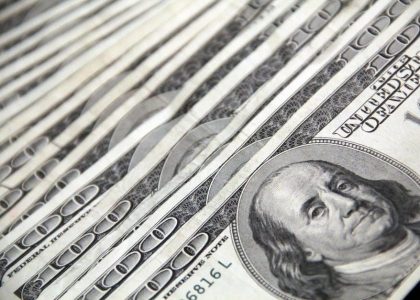The Master and Margarita is a surreal blend of satire‚ dark comedy‚ and magical realism by Mikhail Bulgakov‚ set in Soviet Moscow․ The novel intertwines the earthly chaos with supernatural elements‚ exploring themes of power‚ corruption‚ and redemption․ A cult classic‚ it remains a timeless philosophical exploration of good and evil․

Historical Context
The Master and Margarita was written during Stalin’s regime‚ a period of intense censorship and political repression․ The novel’s critique of Soviet bureaucracy and its blending of religious themes made it a target‚ reflecting the era’s oppressive atmosphere and artistic struggles․
2․1․ Soviet Era Background
The Master and Margarita was written during one of the most oppressive periods in Soviet history‚ under Joseph Stalin’s regime․ The novel reflects the stifling atmosphere of censorship and political repression that pervaded 1930s Moscow․ Mikhail Bulgakov‚ a playwright and novelist‚ faced significant challenges in his career due to the Soviet regime’s strict control over artistic expression․ His works were frequently banned or heavily criticized for their perceived deviation from socialist realism․ The novel itself was written in secrecy‚ with Bulgakov often fearing persecution․ The Soviet authorities viewed any critique of bureaucracy or exploration of religious themes as subversive‚ making the novel a dangerous endeavor․ Despite these risks‚ Bulgakov persisted‚ infusing the story with sharp satire and metaphysical themes that subtly critiqued the regime․ The novel’s eventual publication‚ long after Bulgakov’s death‚ became a testament to the enduring power of art in the face of oppression‚ offering a unique glimpse into the complexities of life under Stalin’s rule․
2․2․ Censorship and Publication History
The Master and Margarita faced intense censorship under the Soviet regime‚ with its publication delayed for decades․ Mikhail Bulgakov completed the novel in 1940‚ but it was deemed subversive and politically dangerous by Soviet authorities due to its critique of bureaucracy and exploration of religious themes․ The novel was banned‚ and Bulgakov faced severe repression‚ with many of his works confiscated or destroyed․ Despite this‚ the manuscript survived‚ and the first fragments were published posthumously in 1966‚ more than 25 years after Bulgakov’s death․ Even then‚ the publication was heavily edited to align with Soviet ideological standards․ It wasn’t until 1973 that the novel was published in its entirety‚ sparking widespread acclaim and establishing it as a literary masterpiece․ The delayed publication underscored the oppressive nature of Soviet censorship‚ while the novel’s eventual release highlighted its enduring relevance and power․ Today‚ it is celebrated as a testament to artistic resilience in the face of political oppression․

Author Background
Mikhail Bulgakov was a Ukrainian-born Russian writer‚ playwright‚ and novelist․ His works often explored the complexities of human nature and societal issues․ Despite facing censorship‚ Bulgakov left a profound literary legacy‚ with The Master and Margarita becoming his most celebrated work․
3․1․ Mikhail Bulgakov’s Life

Mikhail Bulgakov was born on May 15‚ 1891‚ in Kiev‚ Ukraine‚ to a family of modest means․ His father‚ a theology professor‚ died when Bulgakov was just eight years old․ This loss deeply influenced his worldview and writing․ Bulgakov studied medicine at the University of Kiev‚ graduating in 1916․ However‚ he never pursued a medical career‚ instead turning to literature and theater․ During the Russian Civil War‚ he served as a field doctor but soon moved to Moscow to focus on writing․ Bulgakov’s early works‚ such as The White Guard‚ reflected his experiences and the turmoil of the time․ Despite his talent‚ he faced significant challenges under Soviet rule‚ including censorship and political pressure․ His plays were often banned‚ and he struggled financially․ Bulgakov married three times and found solace in his writing‚ even as he faced personal and professional hardships․ His masterpiece‚ The Master and Margarita‚ was written in secrecy and remained unpublished until decades after his death in 1940․ Today‚ Bulgakov is celebrated as one of Russia’s most brilliant and enduring literary voices․
3․2․ His Other Works
Mikhail Bulgakov’s literary legacy extends far beyond The Master and Margarita․ One of his most notable works is The White Guard‚ a play that explores the turmoil of the Russian Civil War through the story of a Ukrainian family․ The play was initially banned but later gained approval under Stalin’s regime․ Bulgakov also wrote The Days of the Turbins‚ a theatrical adaptation of The White Guard‚ which became a significant success and was even praised by Soviet authorities․ Additionally‚ Bulgakov penned Heart of a Dog‚ a satirical novella that critiques the New Economic Policy and the societal changes of the 1920s․ This work‚ like much of his writing‚ was bold in its critique of authority and remained unpublished until after his death․ Bulgakov’s versatility is evident in his work as a librettist for the Bolshoi Opera‚ where he contributed to productions such as The Golden Age․ His writings often blended historical narratives with philosophical themes‚ reflecting his deep understanding of human nature and society․ Despite facing censorship and personal struggles‚ Bulgakov’s works have endured‚ earning him a reputation as one of Russia’s most innovative and fearless writers․

Plot Summary
The Master and Margarita intertwines three storylines: the love story of the Master and Margarita‚ the arrival of Woland and his supernatural entourage in Soviet Moscow‚ and the biblical tale of Pontius Pilate․ Margarita’s sacrifice and transformation during the chaotic events of Woland’s ball highlight themes of redemption and moral complexity‚ while the Master’s struggle to protect his artistic vision underscores the clash between creativity and oppression․ The novel seamlessly blends the surreal with the mundane‚ creating a rich tapestry of philosophical and political commentary․
4․1․ Love Story of Master and Margarita
The love story of the Master and Margarita is a central theme in Mikhail Bulgakov’s novel‚ portraying a deep and selfless relationship between the two protagonists․ Margarita‚ a devoted and determined woman‚ is willing to go to great lengths to save her lover‚ the Master‚ a struggling writer who has lost hope․ Their bond is tested when the Master is separated from Margarita and confined to a mental asylum‚ unable to cope with the harsh realities of Soviet society and the rejection of his work․ Desperate to reunite with him‚ Margarita makes a Faustian bargain with Woland‚ the mysterious and supernatural figure‚ to host his annual ball in exchange for the Master’s freedom․ This act of sacrifice underscores Margarita’s unwavering loyalty and her ability to transcend moral boundaries for the sake of love․ Their story serves as a powerful exploration of devotion‚ redemption‚ and the enduring strength of human connection in the face of adversity․ Through their journey‚ Bulgakov highlights the transformative power of love and its ability to overcome even the darkest challenges․
4․2․ Arrival of Woland and His Entourage
The arrival of Woland‚ a mysterious and supernatural figure‚ and his entourage marks a pivotal moment in The Master and Margarita․ Woland‚ accompanied by a bizarre group of characters‚ including the mischievous Koroviev‚ the cunning Azazello‚ and the gigantic talking cat Behemoth‚ descends upon Soviet Moscow‚ bringing chaos and unpredictability to the city․ Their presence disrupts the mundane lives of the city’s inhabitants‚ exposing the hypocrisy and corruption of the bureaucratic elite․ Woland’s entourage embodies the supernatural and the surreal‚ challenging the atheistic and rational worldview of Soviet society․ Their antics‚ ranging from clever tricks to outright mayhem‚ serve as a catalyst for the unfolding events of the novel․ The arrival of Woland and his companions sets the stage for a series of bizarre and fantastical events‚ blending dark humor with philosophical undertones․ Through their actions‚ Bulgakov critiques the oppressive nature of power and the moral decay of those who wield it‚ while also exploring themes of freedom and redemption․
4․3․ Margarita’s Ball
Margarita’s ball is one of the most iconic and surreal scenes in The Master and Margarita‚ hosted by the mysterious Woland․ The event is a grand‚ decadent gathering where the boundaries between reality and fantasy blur․ Margarita‚ transformed into a witch‚ serves as the hostess of the ball‚ navigating the chaos with elegance and poise; The ball is attended by a plethora of historical and supernatural figures‚ creating a spectacle of moral ambiguity and excess․ Through this event‚ Bulgakov explores themes of power‚ corruption‚ and the duality of human nature․ The ball serves as a critique of the societal elite‚ exposing their hypocrisy and moral decay․ Margarita’s role in the ball underscores her strength and resilience‚ as she embraces her newfound power to protect her loved ones․ The ball is a masterpiece of dark humor and philosophical reflection‚ blending the grotesque with the sublime․ It remains a central symbol of the novel‚ representing the clash between good and evil and the transcendence of love and sacrifice․
4․4․ The Three Storylines
The Master and Margarita is structured around three interconnected storylines‚ each exploring distinct themes while weaving together into a cohesive narrative․ The first storyline follows the tumultuous relationship between the Master and Margarita‚ highlighting their deep love and sacrifice․ The second narrative revolves around Pontius Pilate and the crucifixion of Yeshua Ha-Nozri‚ delving into themes of guilt‚ redemption‚ and moral accountability․ The third storyline focuses on the chaotic arrival of Woland and his entourage in Soviet Moscow‚ satirizing the bureaucratic and ideological rigidities of the time․ These storylines intersect and influence one another‚ creating a rich tapestry of philosophical and social commentary․ The novel’s structure allows Bulgakov to juxtapose the divine and the mundane‚ the supernatural and the earthly‚ while maintaining a subtle balance between humor and profundity․ This interplay of narratives underscores the novel’s exploration of power‚ corruption‚ and the enduring power of love and forgiveness․ The three storylines collectively enrich the novel’s complexity‚ making it a masterpiece of modern literature․

Themes and Symbolism
The Master and Margarita delves into themes of sin‚ redemption‚ and the duality of human nature․ Symbolism is pervasive‚ with Woland’s ball and Margarita’s transformation serving as metaphors for moral ambiguity and the struggle between good and evil․
5․1․ Sin and Redemption
The Master and Margarita explores the themes of sin and redemption through its intricate characters and plotlines․ Woland‚ often perceived as the Devil‚ acts as a moral judge‚ punishing the corrupt and revealing their true nature․ Margarita’s journey is a powerful example of redemption; her love for the Master and her willingness to sacrifice herself demonstrate the transformative power of devotion․ The novel suggests that sin is not absolute—characters like Margarita and the Master find redemption through their struggles and moral choices․
Bulgakov also uses the character of Pontius Pilate to delve into the concept of guilt and forgiveness․ Pilate’s inability to escape his past sin highlights the psychological burden of unresolved guilt‚ while Margarita’s redemption offers hope for transcendence․ The interplay between sin and redemption underscores the novel’s moral complexity‚ blending Christian theology with existential philosophy․
The supernatural elements‚ particularly Woland’s ball‚ serve as a backdrop for these themes‚ illustrating how sin and redemption are intertwined in human existence․ Bulgakov’s exploration of these ideas remains a central focus of the novel’s enduring philosophical appeal․
5․2․ Power and Corruption
The Master and Margarita is a scathing critique of power and corruption‚ particularly targeting the Soviet bureaucracy and its moral decay․ Bulgakov uses the character of Woland‚ a mysterious and omnipotent figure‚ to expose the hypocrisy and greed of those in power․ The novel portrays how power corrupts individuals‚ turning them into self-serving entities who exploit their positions for personal gain․
The Soviet elite‚ represented by characters like Berlioz and the literary bureaucrats‚ are depicted as morally bankrupt and intellectually devoid․ Their obsession with status and material comforts blinds them to the true nature of their actions; Woland’s entourage‚ including Koroviev and Behemoth‚ serves as a catalyst‚ revealing the rot within the system and punishing the guilty in a manner that is both grotesque and poetic․
Bulgakov’s exploration of power dynamics extends beyond the individual to the societal level‚ highlighting how systemic corruption erodes trust and fosters fear․ The novel’s portrayal of a decaying moral landscape underscores the dangers of unchecked power and the importance of ethical accountability‚ making it a timeless commentary on human nature and governance․





